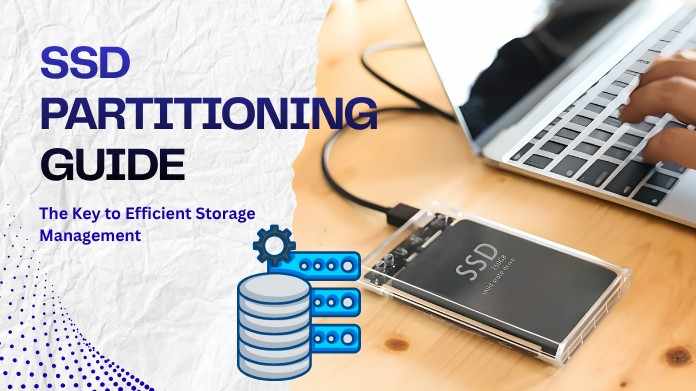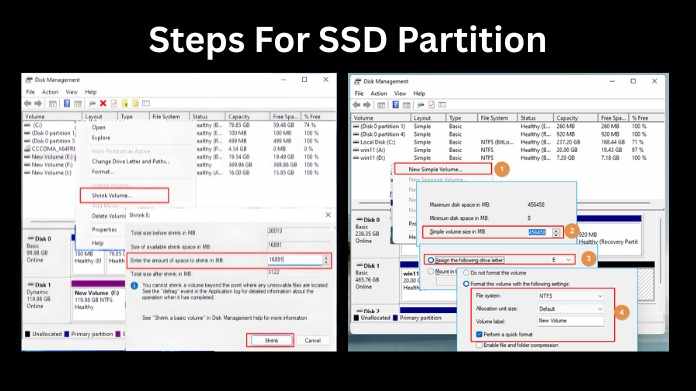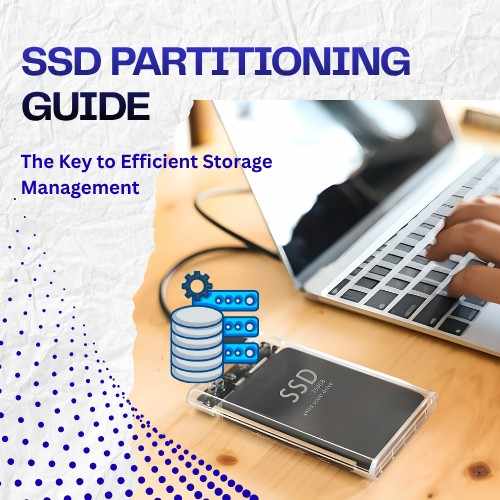When you purchase a new SSD, it often comes as a single huge storage space. Have you ever considered how to better organize the room for performance, safety, and convenience? If so, then you're in the right spot.

This is where SSD partitioning comes in. Partitioning an SSD enables you to separate system files from personal data, simplify file management, and enhance your computer's performance.
It also allows you more control over how your storage is used, allowing you to tailor space to your unique requirements, whether for gaming, programming, or multimedia work.
For people who frequently format or manage drives, applications like GUI Format can also be helpful in preparing partitions or formatting external storage devices.
In this article, you’ll explore what SSD partitioning means, why it’s useful, how to do it safely, and some essential things to keep in mind before you start.
What Is SSD Partitioning?
SSD partitioning is the technique of splitting a solid-state drive into numerous virtual parts known as partitions. Each partition operates like a separate drive, such as "C:", "D:", or "E:" on Windows.
These divisions are intellectual, as opposed to physical boundaries. Your operating system can occupy one partition, while personal files, backups, and apps can occupy another. Partitioning can be done using third-party software or the built-in utilities of your operating system.
This company can greatly facilitate data management and streamline your operations.
Additionally, by distributing data more evenly throughout storage cells and reducing excessive wear on a single location, good segmentation might help your SSD last longer.
Why Partition an SSD?
There are several valuable benefits to partitioning your SSD, particularly for power users & professionals. Let's examine a few main advantages:
Better Data Management: By using partitioning, you may keep your personal files and operating system apart. For example, system files may be stored on one partition, while documents, games, or movies may be stored on another. This dramatically simplifies file retrieval, organization, and backup.
Improved System Recovery: Your data partitions are safe even if your operating system is corrupted. Your personal files won't be deleted if you reinstall Windows or another operating system.
Multi-OS Setup: Do you want to use your SSD to run Linux and Windows simultaneously? Dual-boot configurations are made possible by partitioning, which permits several operating systems to coexist on a single drive.
Efficient Backup and Maintenance: Separate partitions save time and storage space by making it more straightforward to clone or back up just the areas you require.
Optimized Performance: Even if SSDs are already quick, maintaining system files apart from data-intensive media, such as games or films, helps ensure steady performance over time.
How to Partition an SSD?

Depending on your operating system, there are several methods for partitioning an SSD. Here's a quick instruction for Windows users:
Open Disk Management: Right-click on This PC → select Manage → click Disk Management under Storage.
Shrink Existing Volume: Right-click on your main SSD volume (usually C:) and choose Shrink Volume. Enter the amount of space you want to shrink (in MB).
Create a New Partition: Once you have unallocated space, right-click it and select New Simple Volume. Assign it a letter (e.g., D:) and format it with NTFS or exFAT.
Finish Setup: Complete the wizard, and your new partition will appear under This PC as a separate drive.
Tip: For more sophisticated partition management and resizing, consider using third-party programs such as EaseUS Partition Master or MiniTool Partition Wizard.
Things to Consider Before Partitioning an SSD
Partitioning is generally safe, but it’s smart to take precautions:
Backup Your Data: Always back up important files before modifying partitions.
Avoid Too Many Partitions: Having too many small partitions can waste space and complicate file management.
Use Proper Formatting Tools: Use tools like Windows Disk Management or reliable software to avoid data loss.
Be Cautious with System Partitions: Don’t modify your boot or recovery partitions unless you are familiar with the process.
Common Mistakes to Avoid
Here are some pitfalls to watch out for during SSD partitioning:
Deleting the Wrong Partition: Always double-check which drive or partition you’re editing.
Using Old Tools: Outdated partitioning tools may not support modern SSDs.
Skipping Backup: Even a small error can result in lost data, so never skip backing up.
Misalignment of Partitions: Improper alignment can significantly impact SSD performance. Most modern tools align partitions automatically; make sure yours does.
Final Thoughts
SSD partitioning is more than just dividing storage; it's a clever way to arrange your digital environment. You may build a system that is more effective, safe, and manageable with the correct tools and careful design.
Partitioning your SSD can have a significant impact on your daily computing experience, whether you're setting up multiple OS environments, protecting data, or simply organizing your drive.
You can maximize system efficiency while minimizing clutter and confusion by understanding how partitions work.
Additionally, programs like GUI Format can make the procedure quicker and more dependable if you ever need to format or modify your partitions.
About the Author
My name is Wilford Conrad, and I'm a web developer, tech enthusiast, and gamer who enjoys sharing my knowledge of system speed optimization and exploring computer storage technology.
I can combine my love of technology with assisting people in making the most of their gadgets by writing on subjects like SSD partitioning.
Have you previously attempted to partition your SSD? Please share your ideas & experiences in the comments section below!
Ref:
King, T. (2024, October 29). How to partition SSD in Windows. Comprehensive Tutorial. https://www.linkedin.com/pulse/how-partition-ssd-windows-tracy-king-iwl3c/


Write a comment ...